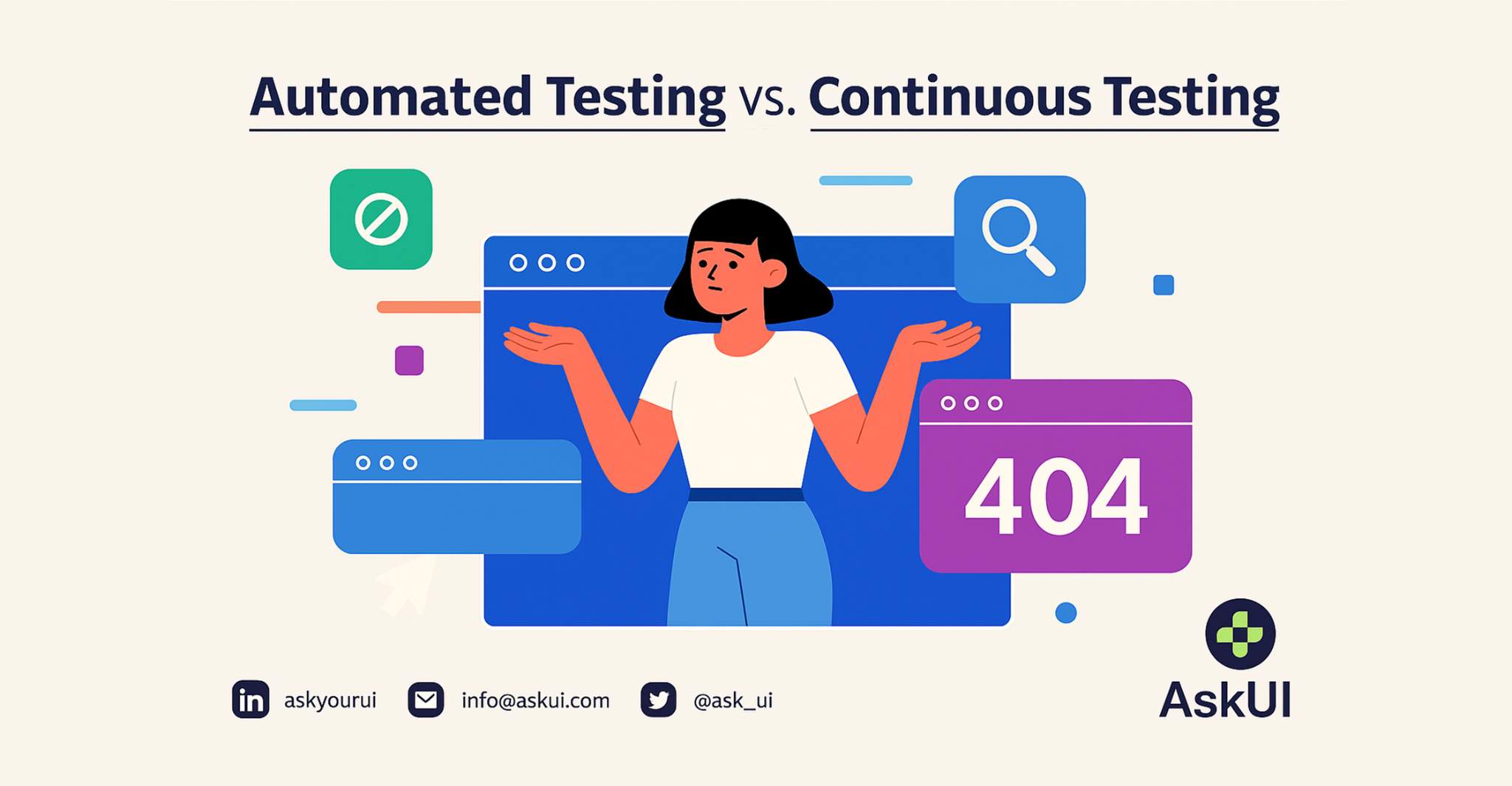TLDR
Automated testing uses scripts to execute predefined test cases, while continuous testing integrates these automated tests throughout the software development lifecycle. This provides rapid feedback and early bug detection, accelerating DevOps and leading to faster, safer software releases. Embracing both strategies is essential for delivering high-quality software at speed in today's competitive landscape.
Introduction
In today's fast-paced software development landscape, ensuring quality and speed are paramount. Automated testing and continuous testing are two critical approaches that help organizations achieve these goals. While both aim to improve software quality, they differ significantly in their scope and implementation. This article will explore the key differences between automated and continuous testing, their impact on DevOps, and best practices for QA leaders in 2025.
The Foundation of Stability: Automated Testing
Automated testing involves using scripts and tools to run predefined test cases, reducing manual effort and speeding up validation. Instead of executing tests manually, automated frameworks (like Selenium, Cypress, or Playwright) handle repetitive checks across various environments. This approach ensures faster test execution, reduced human error, and repeatable validation across builds. [STAT: According to a report by Capgemini, automated testing can reduce testing time by up to 80%.]
Building Blocks of Automation
Common automated testing types include:
- Unit testing: Checks individual code units (often automated via JUnit, pytest).
- UI testing: Simulates user interactions (Selenium, Playwright).
- API testing: Validates endpoints (Postman, REST Assured).
- Regression testing: Ensures new changes don't break existing features.
Continuous Testing: Integrating Quality at Every Stage
Continuous testing integrates automated tests throughout the Software Development Lifecycle (SDLC) to provide rapid feedback on code quality. Unlike automated testing alone, continuous testing runs tests continuously on every code change or commit (often via CI/CD tools like Jenkins, GitLab CI, GitHub Actions). This allows for the quick identification of bugs, security vulnerabilities, and performance regressions. Results are then fed back to developers in near real time, ensuring defects are caught early, reducing costly late-stage fixes. [STAT: Studies show that identifying and fixing bugs in the early stages of development can be up to 100 times cheaper than fixing them in production.] It's a cornerstone of modern DevOps and Continuous Delivery.
DevOps Acceleration: From Integration to Deployment
Both automated and continuous testing significantly accelerate DevOps by enabling frequent, reliable releases. Continuous testing bridges CI (integration) and CD (deployment), ensuring quality at every stage. [STAT: Companies that have successfully implemented continuous testing have reported up to a 20% increase in release frequency.]
| Aspect | Automated Testing | Continuous Testing |
|---|---|---|
| Goal | Replace manual test execution | Embed quality checks across the pipeline |
| When used | Specific phases (like after coding) | Throughout SDLC, tied to every change |
| Tooling | Test frameworks (e.g. Selenium) | CI/CD orchestration + test frameworks |
| DevOps impact | Ensures repeatable validation | Drives faster, safer releases via immediate feedback |
Strategies for Success: Best Practices for QA Leaders
To maximize software quality and delivery speed, QA leaders should consider the following best practices:
- Automate strategically: Start with high ROI tests—critical business flows, frequent regressions.
- Adopt CI/CD: Integrate tests into every pull request and commit pipeline.
- Use quality gates: Block merges if critical tests fail.
- Monitor test health: Regularly audit flaky tests to maintain trust.
- Shift security left: Include SAST/DAST tools in your pipelines. [STAT: Integrating security testing early in the SDLC can reduce security vulnerabilities by up to 50%.]
Conclusion
Automated testing and continuous testing are complementary strategies that are both essential for modern software development. Automated testing provides the foundation by replacing repetitive manual tasks with reliable scripts. Continuous testing elevates this by running tests automatically throughout the SDLC, enabling faster, safer releases. In the competitive environment of 2025, QA teams that effectively leverage both automated and continuous testing will be best positioned to deliver high-quality products at speed.
FAQ
Why isn't automated testing alone enough?
Automated testing verifies functionality but doesn't guarantee continuous quality. Without running tests in the pipeline, bugs can slip through between scheduled test runs, negating some of the benefits of automation.
How does continuous testing save costs?
It catches defects earlier, when they're cheaper to fix; industry data shows bugs found in production can cost 30x more than those caught during development. This proactive approach significantly reduces the overall cost of quality assurance.
Is continuous testing only for large enterprises?
No. Modern CI/CD tools and cloud-based test grids make continuous testing accessible to startups and SMEs. These tools democratize access to sophisticated testing methodologies, leveling the playing field for companies of all sizes.
What are "quality gates" in the context of continuous testing?
Quality gates are automated checkpoints within the CI/CD pipeline that evaluate the results of tests. If critical tests fail at a quality gate, the pipeline is halted, preventing the integration of faulty code into the main codebase.
